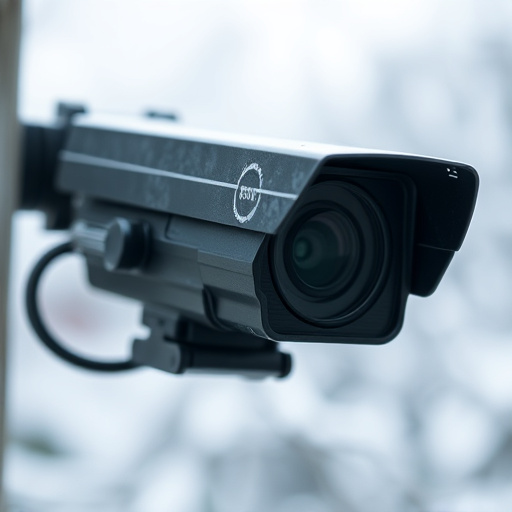Understanding RF detection is key to identifying hidden cameras in best hidden camera locations like living rooms, offices, and bedrooms. Regularly update knowledge on best practices. Use specialized tools like high-gain antennas and oscilloscopes for precise sweeps, ensuring safety with protective gear. Combine visual inspections, RF detection, thermal imaging, and dedicated hidden camera detectors for comprehensive security. Secure property by inspecting common placement areas, rearranging decor, installing lighting, and updating home security systems post-detection.
Uncover hidden threats with our comprehensive guide to RF detector sweeps for hidden cameras. Learn how to identify the best spots in your home where these clandestine devices might be lurking, and arm yourself with the knowledge to protect your privacy. We’ll walk you through essential tools, techniques, and post-detection steps to enhance your home security against potential spying devices. Discover the secrets to staying vigilant in today’s digital world.
- Understanding RF Detection for Hidden Cameras
- Identifying Best Spots to Conduct Sweeps at Home
- Tools and Equipment Required for an Effective Sweep
- Step-by-Step Guide to Detecting Hidden Cameras
- Enhancing Home Security Post-Camera Detection
Understanding RF Detection for Hidden Cameras
Understanding Radio Frequency (RF) detection is key to uncovering hidden cameras, especially in today’s tech-driven world where devices with wireless capabilities are ubiquitous. RF detectors work by scanning for electromagnetic signals, which many hidden cameras emit to transmit video footage. By using advanced technology, these detectors can pick up on faint signals that might be otherwise imperceptible to the human eye or ear.
Identifying the best locations for hidden cameras involves knowing where tech-savvy individuals might conceal them for optimal home security. Common spots include behind picture frames, inside clocks, door handles, and even within everyday objects like plants or light fixtures. Staying vigilant and utilizing RF detection techniques can significantly enhance your ability to spot these devices, ensuring a safer and more secure living environment.
Identifying Best Spots to Conduct Sweeps at Home
When it comes to identifying the best spots to conduct RF (radio frequency) detector sweeps at home, understanding hidden camera locations is key for comprehensive home security. Focus on areas where electronics and devices are commonly used, such as living rooms, offices, and bedrooms. These spaces often house smart home devices, surveillance cameras, or other equipment that can emit radio signals.
Pay close attention to corners and edges, as these are favorite hiding spots for covert cameras due to their reduced line-of-sight. Additionally, look for unusual wiring, power adapters placed in odd locations, or any signs of tampering with electronic devices, as they could indicate the presence of hidden camera components. Regularly updating your knowledge on best practices and keeping up with new technology will further enhance your ability to detect these devices effectively.
Tools and Equipment Required for an Effective Sweep
For a thorough RF detector sweep of hidden cameras, especially in the home security context, the right tools are essential. A top-tier RF (radio frequency) detector is non-negotiable; look for one with a wide frequency range to capture various camera signals. Complementing this, a high-gain antenna will aid in detecting weak signals from remote cameras, making it ideal for scanning hidden camera hotspots like corners and behind large objects.
Don’t overlook the importance of a good quality oscilloscope for visualizing the detected signals. Additionally, a directional coupler ensures you capture only the relevant RF energy, minimizing false positives. When targeting best hidden camera locations, remember to also equip yourself with protective gear – gloves, eye wear, and ear protection – as some devices may emit harmful radiation during the sweep process.
Step-by-Step Guide to Detecting Hidden Cameras
Detecting hidden cameras is a crucial aspect of home security, especially with the rise in advanced surveillance technology. Here’s a step-by-step guide to help you uncover any covert recording devices within your living space. Start by performing a visual inspection, checking common spots like corners, ceiling spaces, and behind furniture. Use a flashlight to peer into tight areas, as these are favourite hiding places for mini cameras. Next, employ an RF (radio frequency) detector sweep, which can identify signals from hidden cameras transmitting data wirelessly. Walk around the area, holding the detector close to potential camera locations; it will alert you if it detects any unusual radio frequencies.
For enhanced accuracy, combine this method with thermal imaging technology, as heat signatures can reveal devices operating in stealth mode. Search for areas with unexpected temperature variations, especially near electrical appliances or outlets. Remember that dedicated hidden camera detectors are also available, offering advanced features to pinpoint and disrupt surveillance equipment. By following these steps and being vigilant, you can ensure a more secure home environment, deterring potential intruders from capturing sensitive information through hidden cameras.
Enhancing Home Security Post-Camera Detection
Once a hidden camera is detected, enhancing home security becomes paramount. The first step is to thoroughly inspect your property, focusing on areas where cameras are most commonly placed – windows, doors, and dimly lit corners. Remove any potential hiding spots for future devices by securing loose furniture, rearranging decor, and installing additional lighting in these problem zones.
Regularly updating security measures is also essential. Consider investing in a robust home security system that includes motion sensors, alarm systems, and surveillance cameras with advanced features like night vision and two-way audio. By combining these proactive steps with the knowledge gained from detecting an initial hidden camera, you can significantly improve your home’s overall security, deterring potential intruders and protecting your privacy.
Detecting hidden cameras using RF sweeps is a powerful tool for enhancing home security. By understanding RF detection, identifying best spots for sweeps, and utilizing the right equipment, you can ensure your home remains a safe haven. Remember to check areas like ceiling fans, pictures frames, and door handles – common hiding places for covert cameras. After successful detection, take proactive measures to bolster your home’s security, making it more difficult for potential intruders to exploit vulnerabilities. Stay vigilant and rest easy knowing your privacy is protected.
